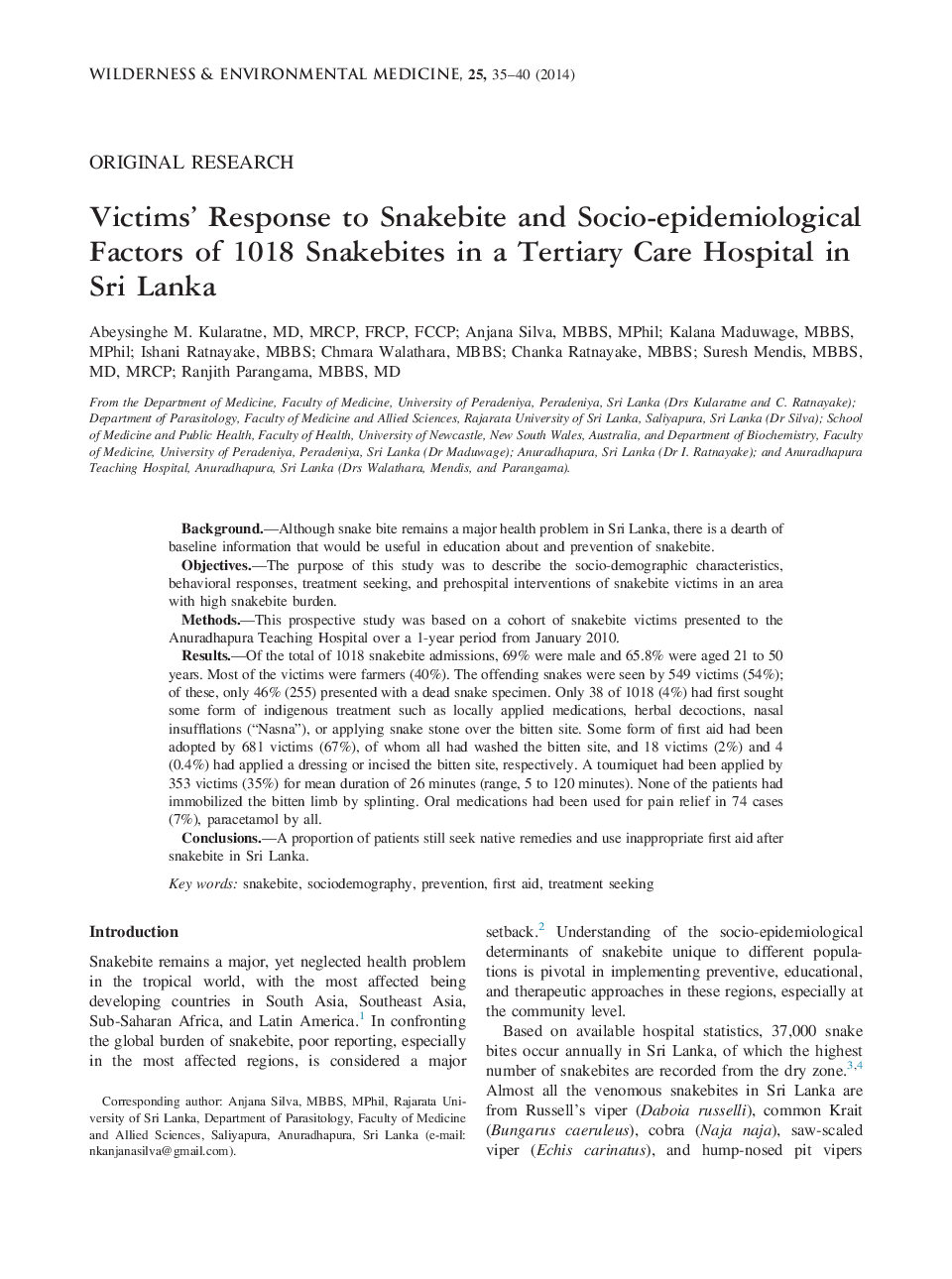| Article ID | Journal | Published Year | Pages | File Type |
|---|---|---|---|---|
| 2614142 | Wilderness & Environmental Medicine | 2014 | 6 Pages |
BackgroundAlthough snake bite remains a major health problem in Sri Lanka, there is a dearth of baseline information that would be useful in education about and prevention of snakebite.ObjectivesThe purpose of this study was to describe the socio-demographic characteristics, behavioral responses, treatment seeking, and prehospital interventions of snakebite victims in an area with high snakebite burden.MethodsThis prospective study was based on a cohort of snakebite victims presented to the Anuradhapura Teaching Hospital over a 1-year period from January 2010.ResultsOf the total of 1018 snakebite admissions, 69% were male and 65.8% were aged 21 to 50 years. Most of the victims were farmers (40%). The offending snakes were seen by 549 victims (54%); of these, only 46% (255) presented with a dead snake specimen. Only 38 of 1018 (4%) had first sought some form of indigenous treatment such as locally applied medications, herbal decoctions, nasal insufflations (“Nasna”), or applying snake stone over the bitten site. Some form of first aid had been adopted by 681 victims (67%), of whom all had washed the bitten site, and 18 victims (2%) and 4 (0.4%) had applied a dressing or incised the bitten site, respectively. A tourniquet had been applied by 353 victims (35%) for mean duration of 26 minutes (range, 5 to 120 minutes). None of the patients had immobilized the bitten limb by splinting. Oral medications had been used for pain relief in 74 cases (7%), paracetamol by all.ConclusionsA proportion of patients still seek native remedies and use inappropriate first aid after snakebite in Sri Lanka.
